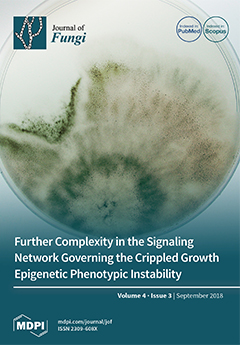Ecological determinants of sporotrichosis etiological agents remain poorly understood. For this reason, we performed explorations using local climate estimates to determine the temperature and humidity ranges of the environment where clinically relevant
Sporothrix species occur and to identify what plant species are associated
[...] Read more.
Ecological determinants of sporotrichosis etiological agents remain poorly understood. For this reason, we performed explorations using local climate estimates to determine the temperature and humidity ranges of the environment where clinically relevant
Sporothrix species occur and to identify what plant species are associated with them, using data collected from the published literature. We performed a literature search to identify all publications on environmental isolations of medically relevant species of
Sporothrix in the PubMed, SCOPUS, and EMBASE databases. All those studies were included in the analysis where medically relevant species of
Sporothrix have been isolated from soil samples, and described a specific geographical location that could be precisely georeferenced. We approximated temperature and humidity from local climate estimates, integrating geospatial data, temperature, and water vapor pressure from regions or provinces where medically relevant species of
Sporothrix have been isolated from soil.
Sporothrix spp. were more commonly isolated from soil of different regions or provinces of 16 countries. Most environmental isolates were identified as
S. schenckii, whereas
S. pallida,
S. brasiliensis,
S. globosa, and
S. mexicana were rare. We estimate that medically relevant
Sporothrix spp. grow in the soil at temperatures of 6.6 °C to 28.84 °C and 37.5% to 99.06% relative humidity. These findings indicate that sporotrichosis etiological agents grow in soil in ecological niches from soil with wide ranges of temperature and humidity, but they are also associated with a variety of plants, flowers, woody debris, reed leaves, corn stalks, leaves, and wood crumbs, potentially facilitating its establishment and proliferation in the environment.
Full article






